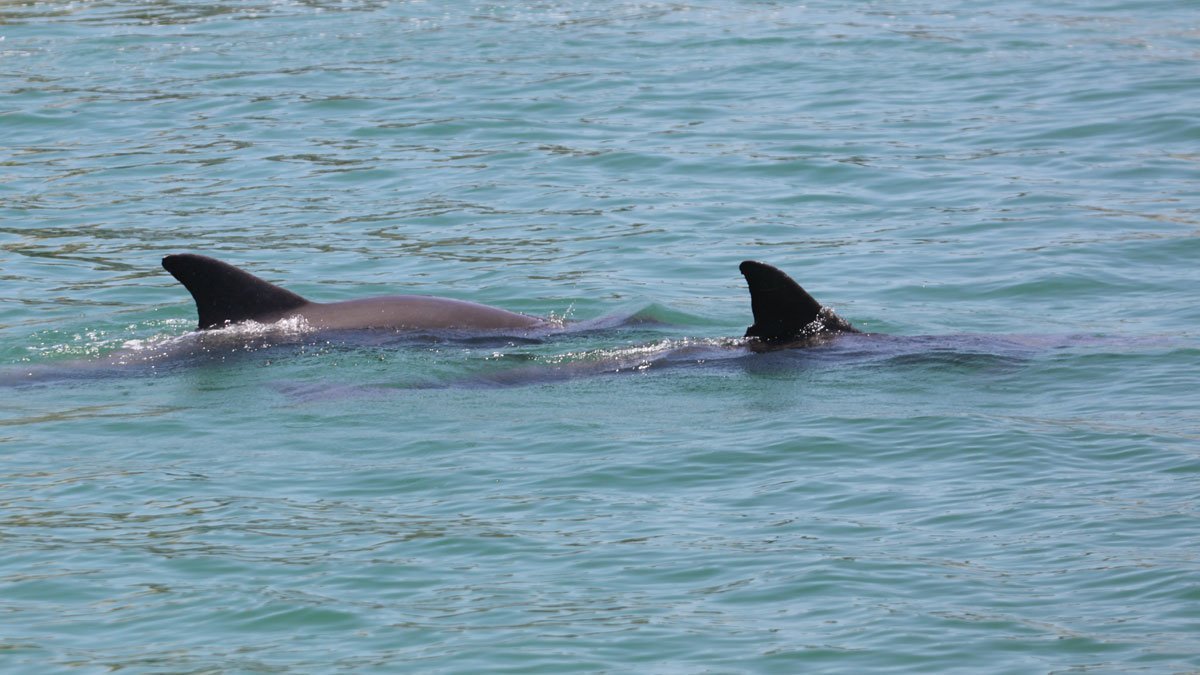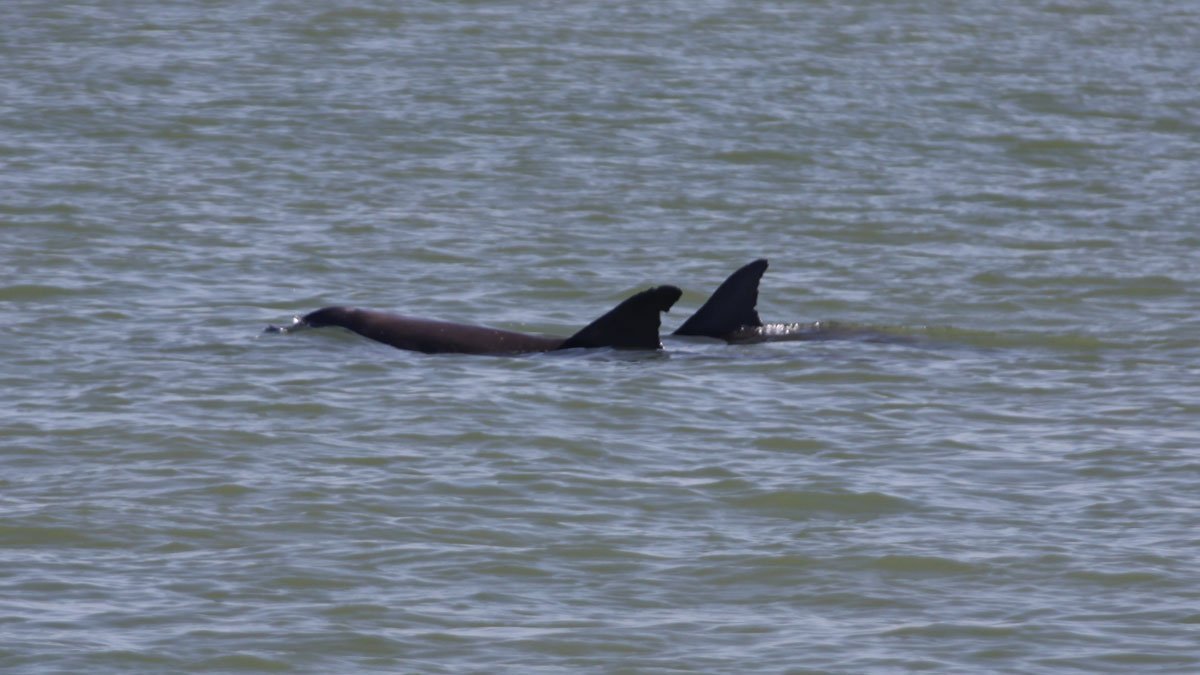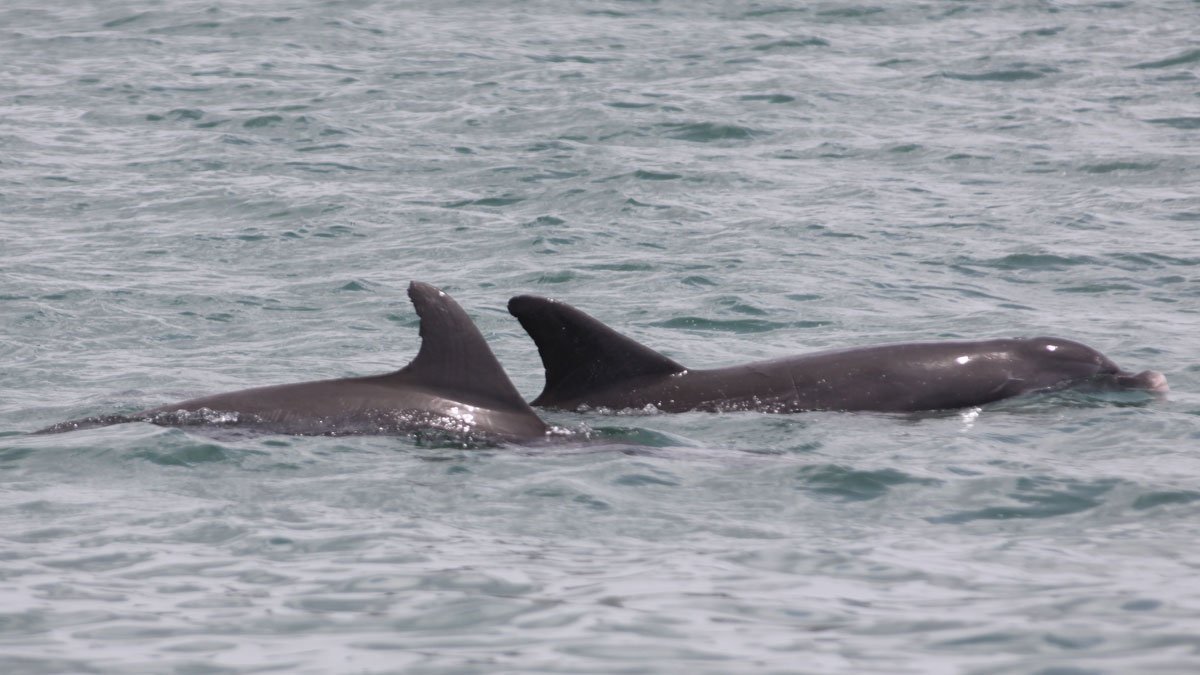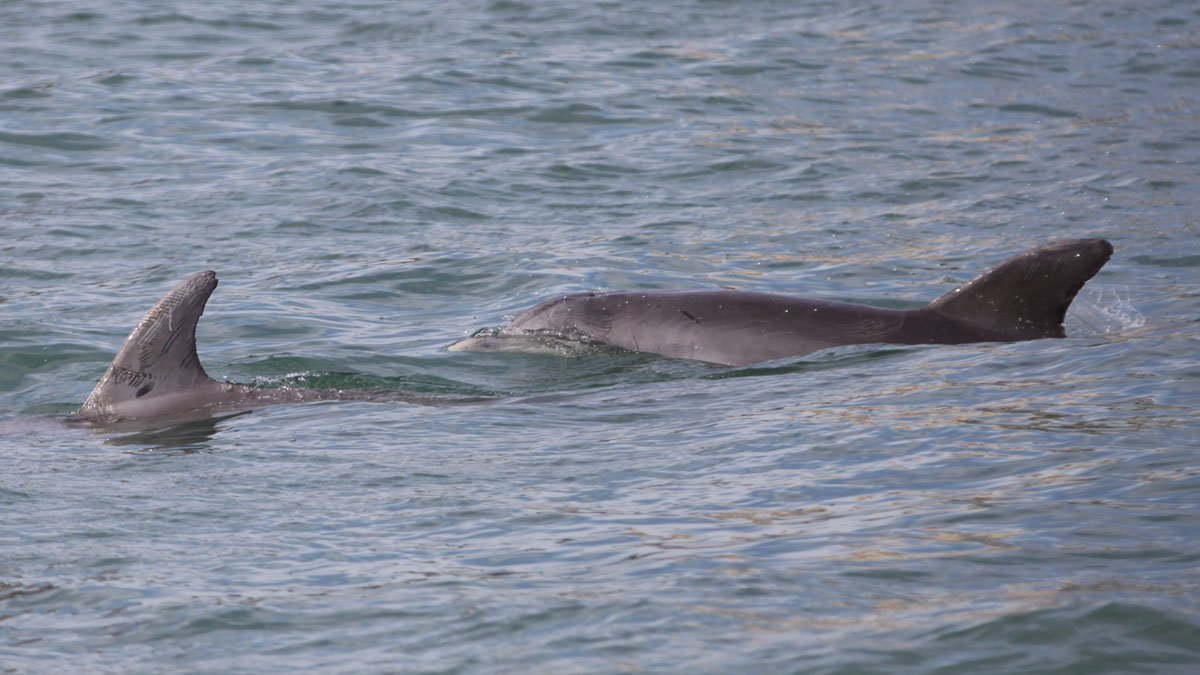Wild Dolphin Updates

The Bromance of Bottlenose Dolphins
Have you ever wanted to hang out with your best friend all the time? Many male bottlenose dolphins get to do this every day! These strong friendships or associations, known as pair bonds, are a common, long-lasting group structure seen in our wild resident population. This bond typically forms when two mature males come together and socialize as a pair for an extended period of time. The male pair bonds form the longest associations in the bottlenose dolphin community.
This bond is thought to aid the males with hunting and mating success as well as predator protection. Due to its benefits, some bonds are so strong, they last until one of the males passes away. Though our study has only been ongoing since August of 2013, we have already seen this in the bond between Lenny and Seven.

Lenny’s name may be familiar as he was an animal our team rescued from a severe fluke entanglement last February. Seven and Lenny were documented as a pair by other teams prior to our study’s initiation. Seven passed away in January of 2015 from what we suspect to be old age. Since that time, Lenny has not chosen another male to bond with.
Identifying Pair Bonds in the Wild
Understanding our population’s relationships is a large focus of our study and, recently, the research team has been putting a lot of emphasis on determining who is pair bonded. Determining gender in the wild can be difficult, so most pair bonds are determined solely on repeated associations between two individuals not assumed to be a mother-calf pair. Below are a few more of our most commonly seen suspected male pair bonds:

Buzz and Wheezy are a newly discovered suspected pair bond! They have been documented together since 2016.

Stripe and Bindy observed as a pair since 2014.
While many males pair bond, it is still common to see males and even females live more solitary lifestyles in the wild. Bonds are thought to form based on similarities in behavior and age between the males, and some form long after a male has matured and been solitary for some time.
Moving forward, we are excited to learn more about these bonds as more information is gathered on our population especially with regards to many of our newly matured calves.
Learn more about our local wild dolphin population on a Dolphin Adventure Tour.
Contributed by Savannah Gandee & Chelsea Carter, CMA Education Team.
Research conducted and photographs collected under the NMFS Scientific Research Permit No. 19749.